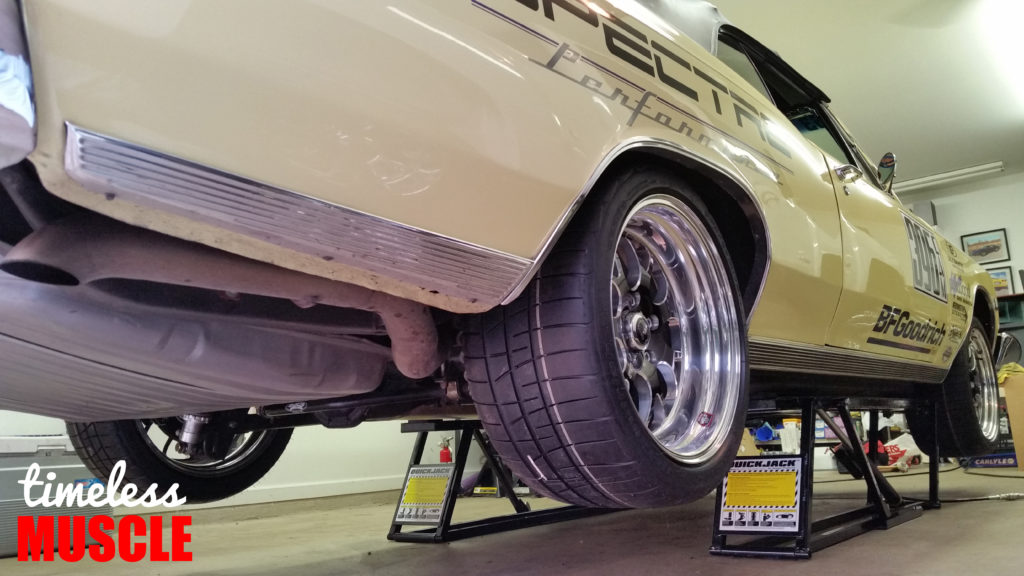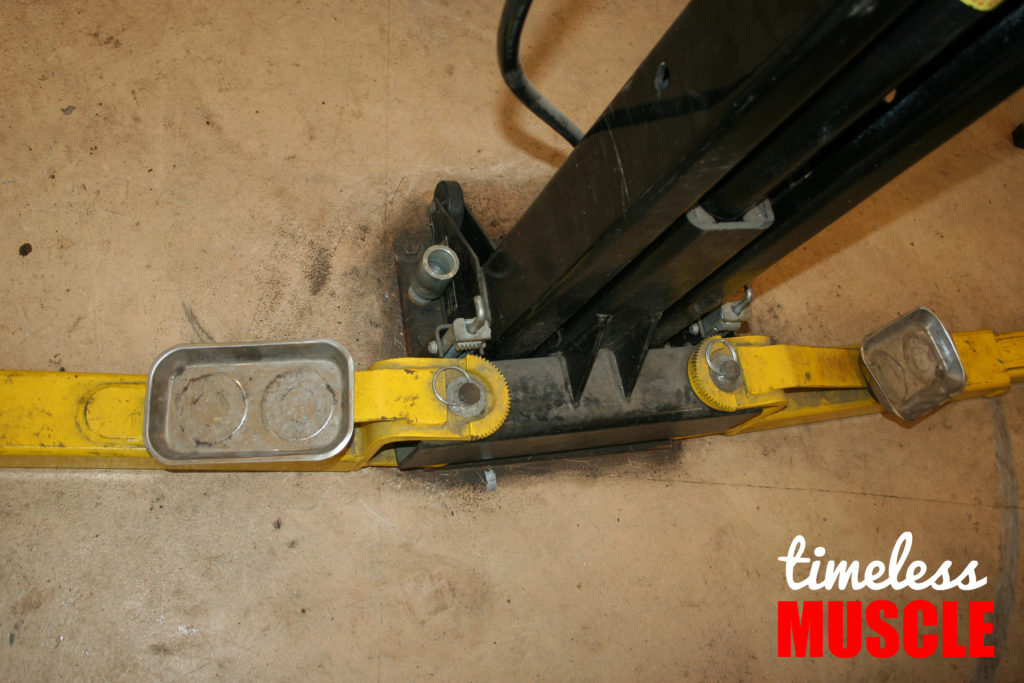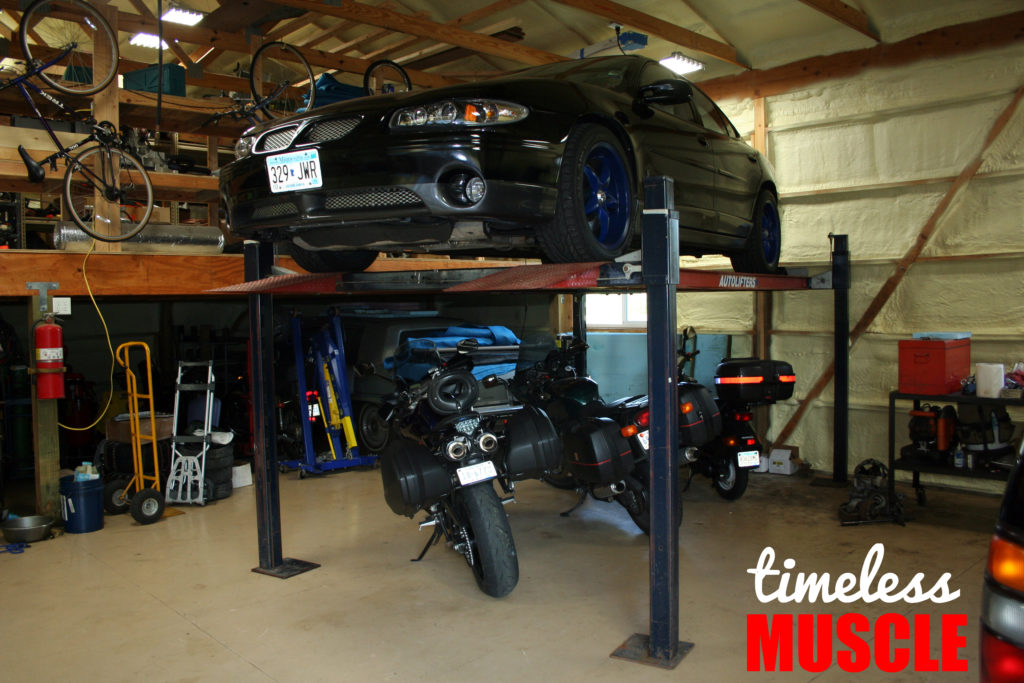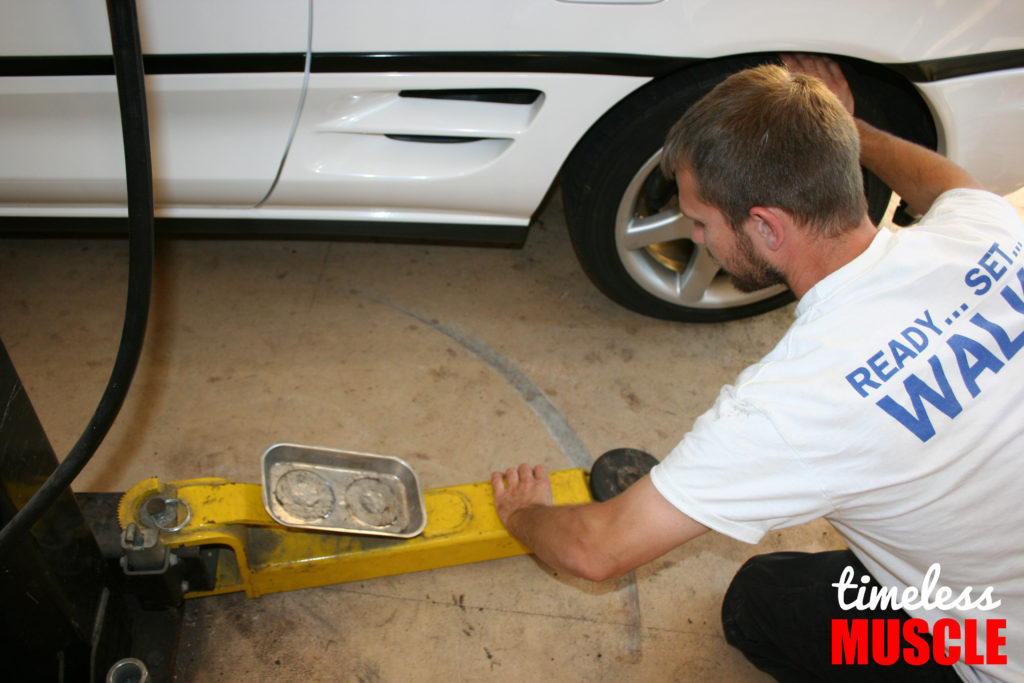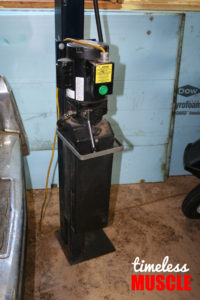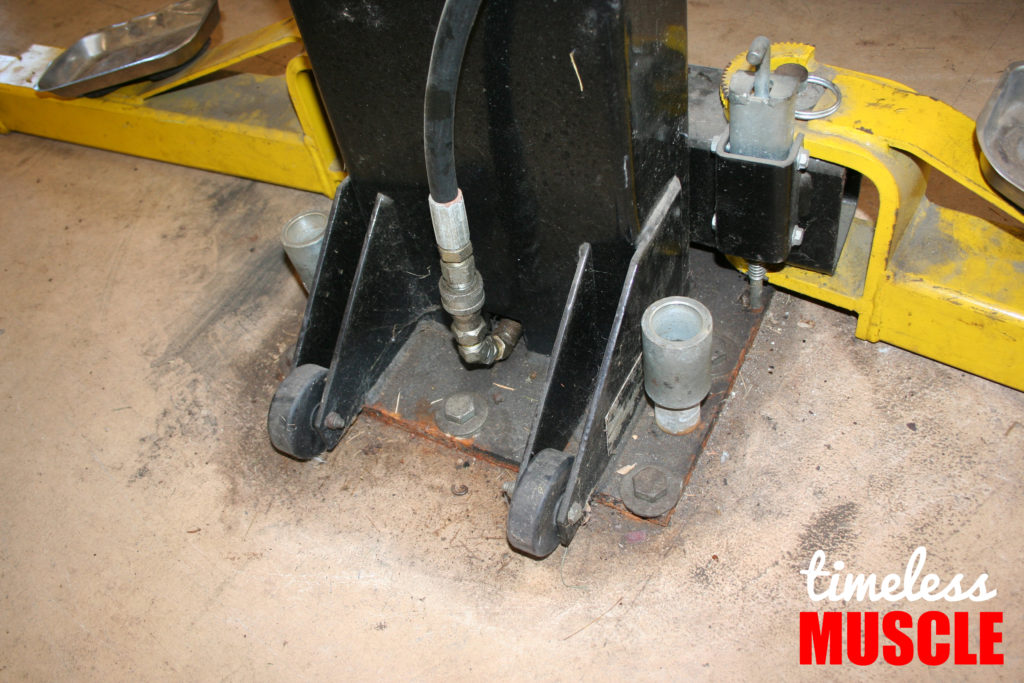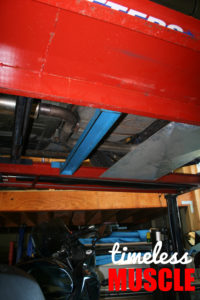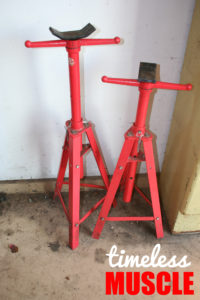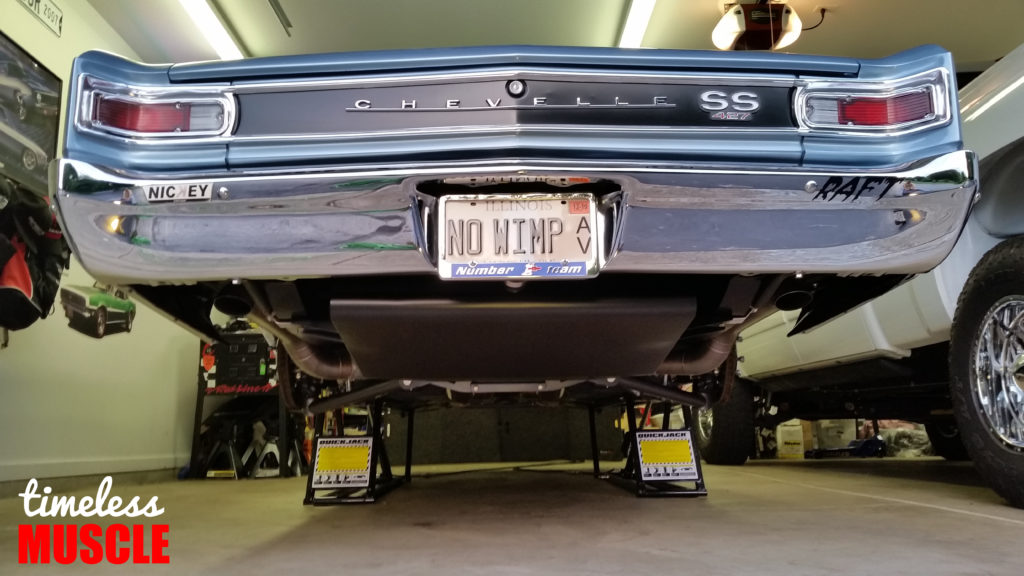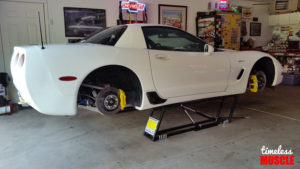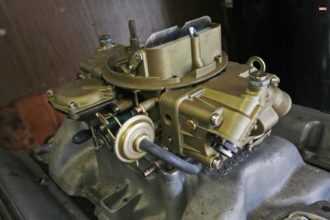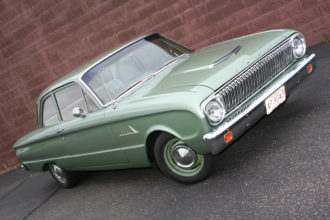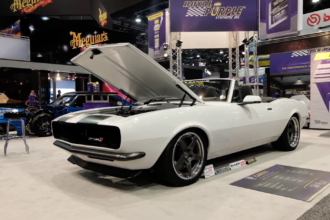photos by: the author
Is Your Garage Ready For A 2-post or 4-post Lift?
Most of us enjoy working on our muscle car projects in our home garages. We’re confident that many of the rides our readers proudly own were built, restored, or modified by the owner (and his or her pals) right in the garage.
We also know that working with a hydraulic pump jack and jackstands isn’t the easiest or safest way to accomplish heavy work. Wheel and tire removal or replacement, brake work, and even something as heavy as a transmission replacement can all be accomplished with a jack and some stands, but it’s certainly not easy. We also hate hearing about accidents where someone gets hurt when things don’t go right. Cars get damaged this way too, but people getting hurt is the worst.
It’s all preventable when you consider a home lift of some kind. There are a lot of innovative designs out there on the market now. Many have been engineered specifically for home use, while others are more tailored to the professional shop- but enthusiasts adapt them to use in their garages. We’d like to look at some of the many options out there and talk about what it takes to get a nice lift in your garage. There are a lot of advantages beyond what we’ve already mentioned, and it might be a lot less expensive than you think.
When it comes to electric vehicle lifts, enthusiasts are most familiar with either the 2-post or 4-post design. The 2-post uses swinging arms to align with the vehicle chassis, and once they are placed properly, the entire vehicle can be lifted to allow servicing of any component beneath the car. With the vehicle supported by the chassis, the suspension is unloaded and will hang in place. You’ll have full access to everything under the car that isn’t near the chassis lift points, so things like exhaust, driveshaft, transmission, and the rear axle can all be worked on relatively easily.
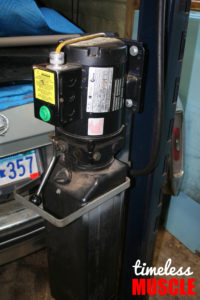 What you can’t do easily is park another vehicle under a 2-post lift that’s in use. That isn’t what they’re designed for, and it’s not recommended.
What you can’t do easily is park another vehicle under a 2-post lift that’s in use. That isn’t what they’re designed for, and it’s not recommended.
When we looked into 4-post lifts, they are also designed to be moved relatively easily. They are assembled as a unit, however. The drive-on design that is typical of these 4-post lifts means the basic square frame that you drive the vehicle up on to remains together, and each post is connected to the square frame through a system of cables and pulleys.
This simple arrangement allows for easy setup, given that you have adequate space for it. It also means that the four posts are spread widely apart, allowing you to easily park another vehicle under the lift once it’s in the raised position, effectively giving you another stall in your garage.
Of course, if you drive up on to the 4-post lift, the vehicle weight is still on the tires and the suspension is still loaded. This means that you will still have to jack the car up to remove the wheels or any sprung suspension part. The lift manufacturers make this easier by offering various “bridges” that extend from one side of the lift to the other, and they can support a jack or offer a place to work from.
Naturally you still have great access to the components under the car, and there is the added advantage of seeing the vehicle just as it sits on the street. If you need to check clearances around suspension or exhaust parts, locate an annoying noise, or find a leak, the drive-on lift is the way to go.
We spoke with our pal Bennie Aust, who is in the enviable position of having both a 2-post and a 4-post lift in his home shop. He does a fair amount of repair work on his own fleet in addition to helping family and friends with their projects. We asked how it all came together, and Ben was honest with us about everything from real costs to how often he hit his head on these lifts. His answers were pretty enlightening.
TM: How much do the 2-post and 4-post lifts cost, both new and used, on average?
Ben: They are very affordable! For the average person’s home garage needs, a lift can be had for $2,000-$3,000 new, a little less on sale…and probably half that price if it’s used. My 6,000-lb. 2 post Dannmar MaxJax lift was $1,800 delivered, on sale, brand new. My 6,000-lb. 4 post Autolifters unit (they are no longer in business) was $1,200, used. There are many 9,000lb BendPak lifts, both 2- and 4-post models, for under $3,000 new.
TM: In your opinion, what brands dominate the market?
Ben: BendPak, Atlas Automotive Equipment, Rotary Lift, Dannmar Equipment, Mohawk Lifts, and Challenger Lifts are all well-established brands. There are many other brands out there that aren’t as well-known. BendPak seems to be one of the most well-known brands, and they are still very affordable.
TM: Are they hard to service or repair?
Ben: Some, like my personal 2-post unit, are extremely simple to maintain and repair- if it ever even needed a repair. My 4-post drive-on unit, like most of them, has wire cables and a lot of pulleys. It’s pretty easy to repair but does need more attention (like basic lubrication) than my simple 2-post.
TM: What parts typically wear out? Are they hard to replace, or expensive?
Ben: My 2-post has very few moving parts, but any component would be pretty easy to fix if needed. The few parts it has would probably not be cheap, since they are all pretty major components. On the 4-post, the pulleys do wear out sometimes, and I suppose over a long time period, the cables would also wear out. Neither would be very expensive or hard to change, though. They are all easy to
access.
TM: When shopping for a used lift, what would you look for?
Ben: I bought my 2-post lift brand new, and bought my 4-post unit used from a good friend, so it took a lot of the guess work out of it for me. I have seen a lot of used lifts for sale that were disassembled! I would never buy a used lift that I couldn’t see function, unless it was almost free. Why take that chance?
There are a few things to inspect. I’d surely check the hydraulic fluid level to make sure it’s been serviced. I’d run it up and down to see if the pump sounds okay and works the way it’s supposed to (smoothly, at a steady rate). I’d check for any cable wear (fraying), pulley play (loose bearings), any hydraulic line and cylinder leaks, any major rust on structural parts. If it passed muster on those critical points, I’d have no reservations purchasing it and setting it up at home.
TM: What electrical requirements are there for hooking one of these up at home?
Ben: This is a good question to ask before buying one. Both of mine run on a normal 20 amp, 115-volt circuit/outlet like you have in your house or garage. Some of the larger ones require 230-volt/single phase like you’d see in a pro shop.
TM: What about mounting the posts into masonry typically found on home garage floors?
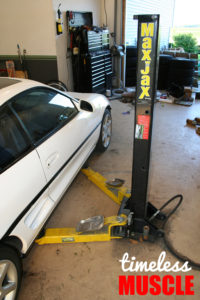 Ben: Always check with the manufacturer of the lift you are looking to purchase about its specific requirements. I don’t think 4-post lifts ever require anchoring to the floor. The 2-post units ALWAYS require floor anchors. If you have 4-inch thick concrete floor in good condition (with no cracking) you should be fine, as this is the usual requirement for anchoring.
Ben: Always check with the manufacturer of the lift you are looking to purchase about its specific requirements. I don’t think 4-post lifts ever require anchoring to the floor. The 2-post units ALWAYS require floor anchors. If you have 4-inch thick concrete floor in good condition (with no cracking) you should be fine, as this is the usual requirement for anchoring.
Most garages would have a thick enough concrete floor, but it should be verified before purchasing the lift. If there are any questions about your floor meeting the standard, you can cut out a small floor section, like 3’x3’ and 1’ deep (per post) and have it tied into the surrounding floor with rebar, and then pour footings for the lift.
If you have in-floor heat in your garage, that may complicate the installation. I did my own installation and I have in-floor heat. I mapped it out on the floor (using a temperature gun) and I was able to get the anchors installed without issue.
TM: What are the advantages and disadvantages of 2-post vs. 4-post designs?
Ben: 2-post Advantages:
- Repair and maintenance.
- Most have a small footprint, extremely out of the way when doing almost any maintenance or repairs that require the vehicle to be lifted.
2-post Disadvantages:
- Requires anchoring.
- Not for vehicle storage.
- Vehicle position is very specific: front-to-back weight centering and side-to-side position centering is critical to safe operation.
- Vehicle lift points are sometimes very specific and can vary greatly from one vehicle to another (unibody vs body on frame). This can be complicated more by older, more rusty vehicles that have rotted out lifting points.
- Wheels and suspension are left hanging. Basically, don’t buy a 2 post for storage purposes.
4 post Advantages:
- Vehicle Storage capability.
- No commitment to location (no anchoring required).
- A 4-post drive-on lift is very accessible. Simply drive up on it, and push a button to lift it up out of the way. You can lower it down and drive away anytime you want.
Disadvantages:
- Larger footprint, poor access for repair and maintenance projects, vehicle is still resting on the wheels.
- There are bridge jacks available to jack up the vehicle after you have it on the lift, but they are costly and you still have relatively poor access for working on the vehicle compared to the 2-post.
TM: Are there huge disparities in costs between them in both new and used markets?
Ben: No.
TM: Are there any lifts you’d recommend or advise people to avoid?
Ben: In general, I would avoid an unknown manufacturer. Sticking with a name brand or known brand will most likely give you piece of mind and parts availability, should you ever need it.
TM: Any other advice for lift shoppers?
Ben: If used correctly, 2- or 4-post lifts are both safer than a floor jack and jack stands. A drive-on 4-post lift takes the big factor of jack or lift arm placement out of the equation.
With a floor jack and Jack stands (or a 2-post lift) it is very possible to use an incorrect lifting point that could be very unsafe.
There are a few things you should plan on purchasing when you buy a lift for repairs or maintenance:
- Portable oil drain dolly/caddy
- “Tall” jack stands
- Mechanics stool on casters
- A step stool or small ladder to access the vehicle interior or underhood area when the vehicle is lifted
We also investigated other types of home lifts, and our pal Chris Jacobs shared his personal experience with a different design. He really likes the compact QuickJack, which is offered in a wide range of sizes and collapses down to a 3-inch height so it can be used with really low cars, like Chris.’
He told us, “I’m very pleased with my QuickJack. For enthusiasts on a smaller budget, or with low ceilings that prevent you from getting a full-size 2-post or 4-post lift, it’s a great option.”
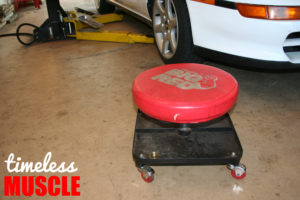 The QuickJack is a chassis lift, so wheels, brakes, and suspension can be readily accessed while using it.
The QuickJack is a chassis lift, so wheels, brakes, and suspension can be readily accessed while using it.
Chris and his wife Lynda are also the kind of racers who like their cars to look good in addition to running at the front of their class, and you can see how the use of the QuickJack can make detailing a lot easier on the bottom half of the car, and in the critical areas behind the tires that racers can sometimes neglect because they’re hard to get at.
The QuickJack comes in five different sizes (and price points) ranging from $1,125 up to $1,545. The QuickJack is portable, and Chris brings his to Track Days and performance events in his car hauler. It sure makes checking the car(s) out after each session easy, and finding a new rattle or leak gets a lot easier with a tool like this. The larger QuickJack will lift the car just over 18 inches, and with attachments (adapter blocks) it could go even higher, if need be.
It’s never been easier or more affordable to get a professional-style lift in your home garage. Having one makes working on your muscle car project easier and safer, which means you’ll probably get more done and be more capable as a result of having one.
Obviously, if you get a good 4-post setup, you could potentially gain another parking spot in your garage, which is valuable on many levels. Whether that means you don’t have to pay for winter storage, or you’ll be able to park indoors yourself, or that your significant other will be able to keep that precious indoor parking spot- the fact remains that another space is something no gearhead would ever refuse.
Look into these options yourself, and scan your local ads to see if any used lifts are available. While we’ve talked a lot about buying a used lift, we haven’t talked about selling one. That’s another benefit- a well-maintained home lift will also keep some value, so someday when you’re ready to sell it, you’ll get a good percentage of your investment back. Look at your own needs and decide what’s best for you, and soon you’ll be able to quit working under jackstands once and for all.
After spending almost a decade in the aerospace industry, Scott Parkhurst chose to learn about racing engines by working in some of Southern California’s most respected engine shops. He took on the role of Tech Editor at Popular Hot Rodding magazine back in 1998, and was instrumental in the development of both the Engine Masters Challenge competition and Engine Masters Quarterly magazine. He was also the founding Editor of Street Thunder magazine and Author of the V8 Horsepower Performance Handbook before he arrived at Timeless Muscle.








